Florian Azendorf
Low-Complexity Event Detection and Identification in Coherent Correlation OTDR Measurements
Jan 29, 2025


Abstract:Pairing coherent correlation OTDR with low-complexity analysis methods, we investigate the detection of fast temperature changes and vibrations in optical fibers. A localization accuracy of ~2 m and extraction of vibration amplitudes and frequencies is demonstrated.
Pressure Wave Detection and Localization in Deployed Underground Fiber using Coherent Correlation OTDR
Dec 02, 2024
Abstract:A deployed fiber with in-house and underground sections is interrogated with a coherent correlation OTDR. The origin and propagation speed of a hammer-generated pressure wave in the underground section is detected and acoustic signals are monitored.
* This work has received funding from the Horizon Europe Framework Programme under grant agreement No 101093015 (SoFiN Project)
Remote Sensing with High Spatial Resolution
Dec 02, 2024


Abstract:Distributed fiber sensing based on correlation-aided phase-sensitive optical time domain reflectometry is presented. The focus is on correlation as an enabler for high spatial resolution. Results from different applications are presented.
* This work has received funding from the Horizon Europe Framework Programme under grant agreement No 101093015 (SoFiN Project)
Monitoring of Optical Networks Using Correlation-Aided Time-Domain Reflectometry with Direct and Coherent Detection
Jun 06, 2023Abstract:We report on methods to monitor the transmission path in optical networks using a correlation-based OTDR technique with direct and coherent detection. A high probing symbol rate can provide picosecond-accuracy of the fiber propagation delay, while a sensitive phase detection with a high repetition rate allows the monitoring of dynamic effects in the vicinity of the fiber. We discuss various approaches to evaluate the measured traces and show the results of a few monitoring applications.
Simultaneous Temperature and Acoustic Sensing with Coherent Correlation OTDR
May 26, 2023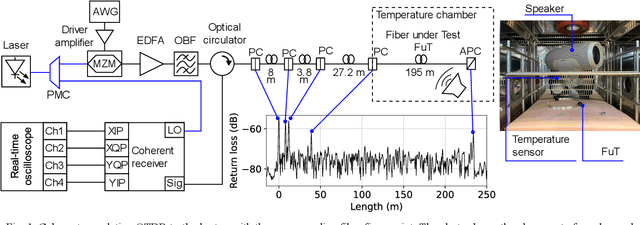

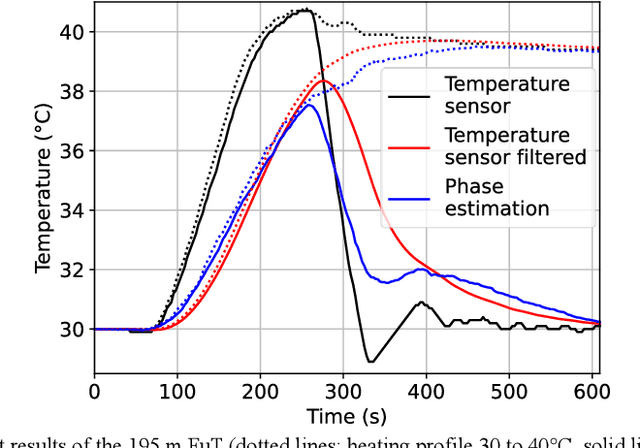
Abstract:Superimposed temperature variations and dynamic strain applied through a 400 Hz acoustic signal on a 195 m single-mode fiber section are successfully measured using a coherent correlation optical time domain reflectometry as an interrogator.
* This work was partially funded by the German Federal Ministry of Education and Research in the framework of the RUBIN project Quantifisens (Project ID 03RU1U071D)
Optical fiber for remote sensing with high spatial resolution
Jul 06, 2022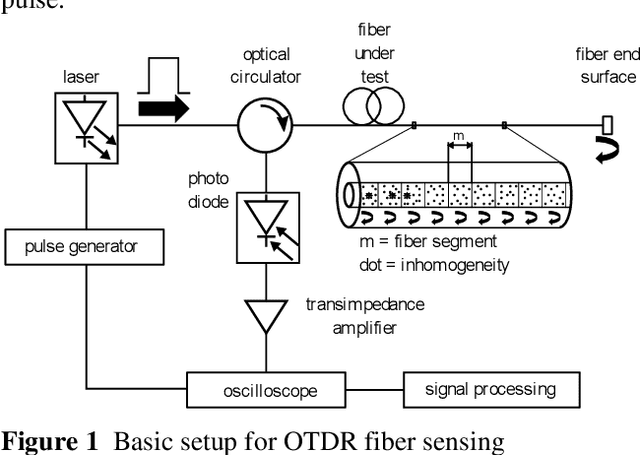
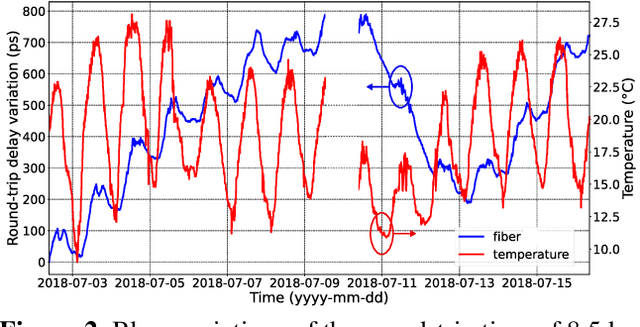
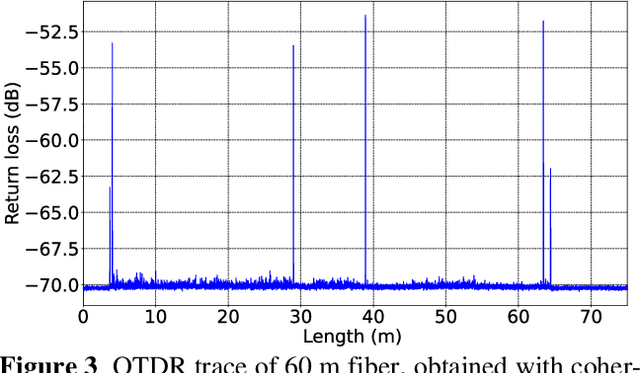
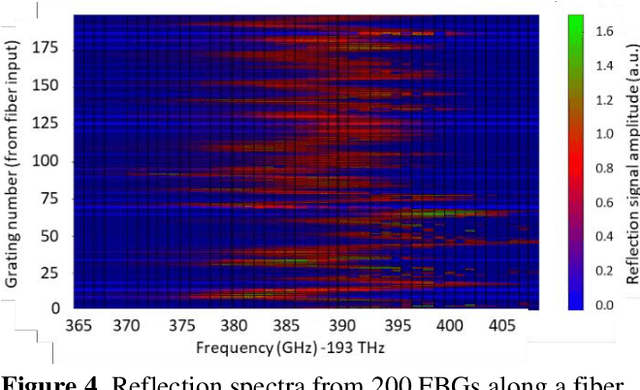
Abstract:The use of optical fiber as sensor as well as transmission medium for sensing data is discussed, enabling the use of optically active sensors without power supply at distances of tens of kilometers. Depending on the interrogation system, a spatial resolution of less than a millimeter can be achieved. The basic sensing principle is optical time-domain reflectometry (OTDR) with direct detection or coherent detection of the Rayleigh back-scattered or Fresnel reflected signal. Spatial resolution is improved by a cross-correlation between the transmitted sequence and the received signals.
Gated Recurrent Unit based Autoencoder for Optical Link Fault Diagnosis in Passive Optical Networks
Mar 19, 2022
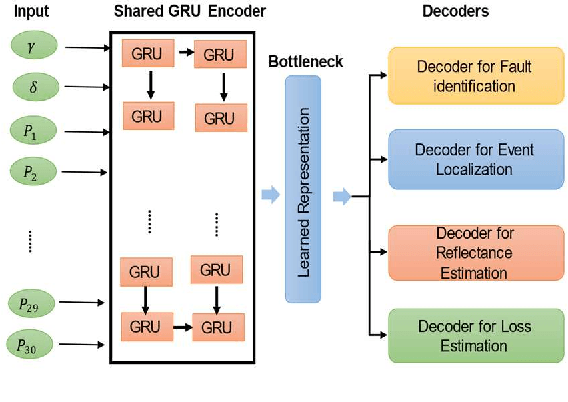
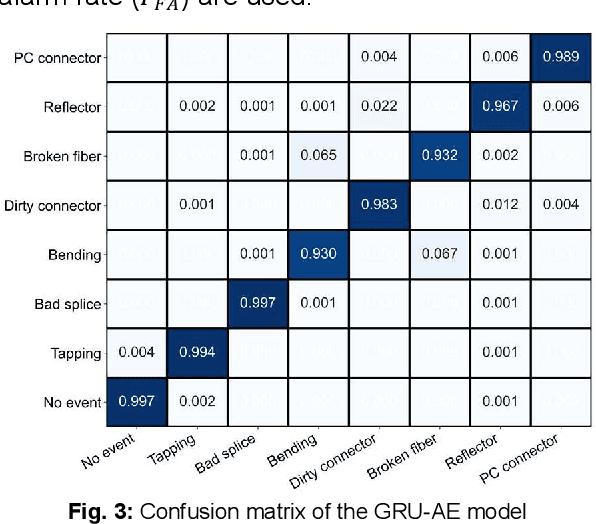
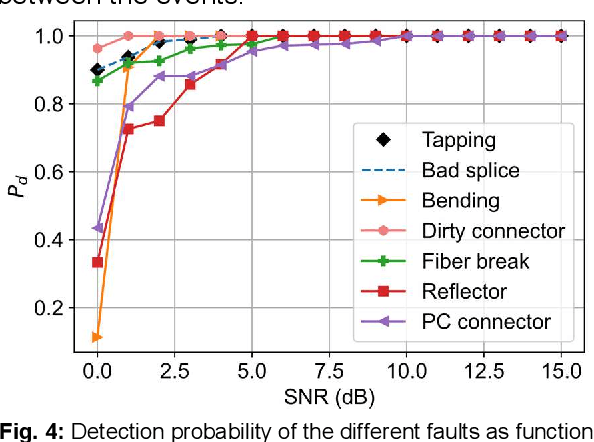
Abstract:We propose a deep learning approach based on an autoencoder for identifying and localizing fiber faults in passive optical networks. The experimental results show that the proposed method detects faults with 97% accuracy, pinpoints them with an RMSE of 0.18 m and outperforms conventional techniques.
Machine Learning-based Anomaly Detection in Optical Fiber Monitoring
Mar 19, 2022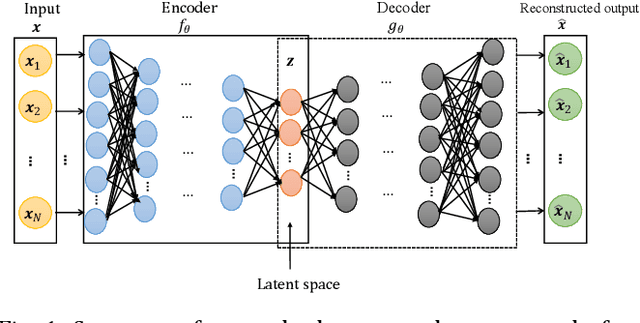
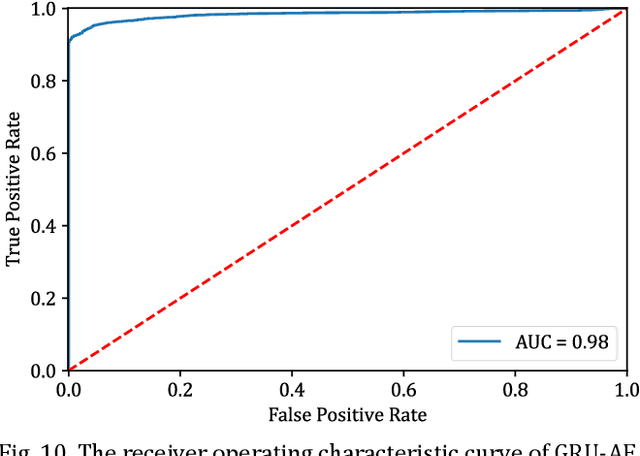
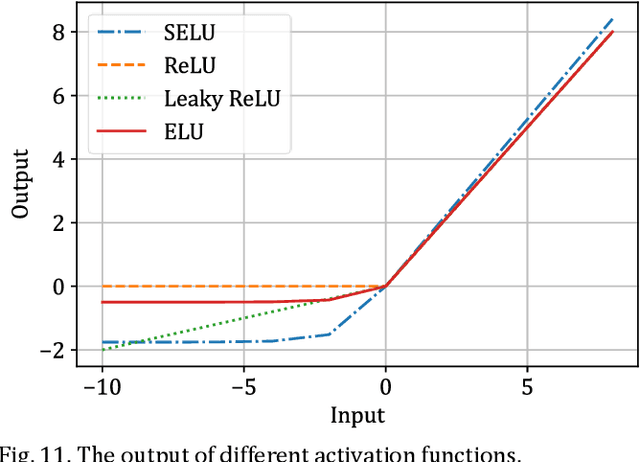
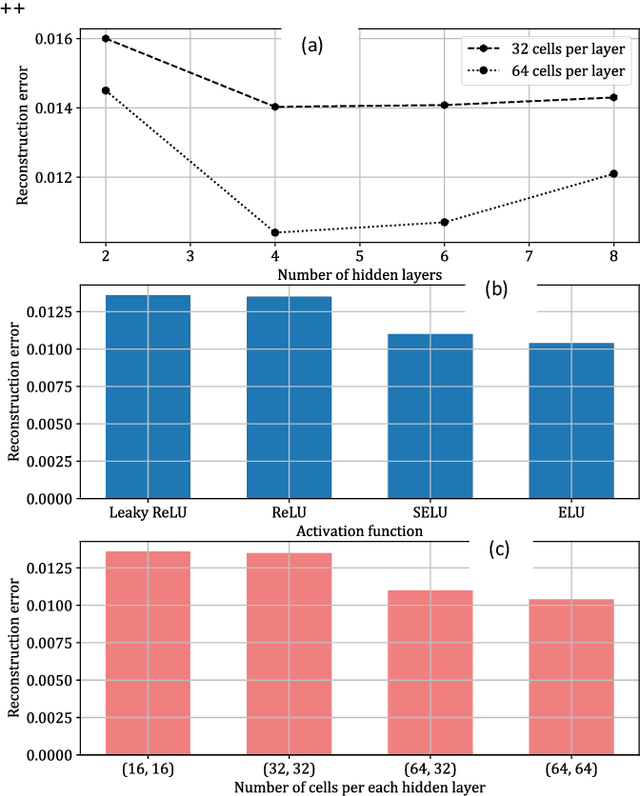
Abstract:Secure and reliable data communication in optical networks is critical for high-speed Internet. However, optical fibers, serving as the data transmission medium providing connectivity to billons of users worldwide, are prone to a variety of anomalies resulting from hard failures (e.g., fiber cuts) and malicious physical attacks (e.g., optical eavesdropping (fiber tapping)) etc. Such anomalies may cause network disruption and thereby inducing huge financial and data losses, or compromise the confidentiality of optical networks by gaining unauthorized access to the carried data, or gradually degrade the network operations. Therefore, it is highly required to implement efficient anomaly detection, diagnosis, and localization schemes for enhancing the availability and reliability of optical networks. In this paper, we propose a data driven approach to accurately and quickly detect, diagnose, and localize fiber anomalies including fiber cuts, and optical eavesdropping attacks. The proposed method combines an autoencoder-based anomaly detection and an attention-based bidirectional gated recurrent unit algorithm, whereby the former is used for fault detection and the latter is adopted for fault diagnosis and localization once an anomaly is detected by the autoencoder. We verify the efficiency of our proposed approach by experiments under various anomaly scenarios using real operational data. The experimental results demonstrate that: (i) the autoencoder detects any fiber fault or anomaly with an F1 score of 96.86%; and (ii) the attention-based bidirectional gated recurrent unit algorithm identifies the the detected anomalies with an average accuracy of 98.2%, and localizes the faults with an average root mean square error of 0.19 m.
* arXiv admin note: substantial text overlap with arXiv:2202.11756
Accurate Single-Ended Measurement of Propagation Delay in Fiber Using Correlation Optical Time Domain Reflectometry
Feb 23, 2022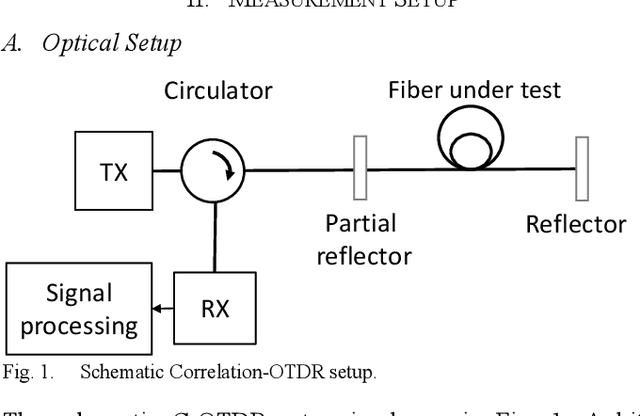

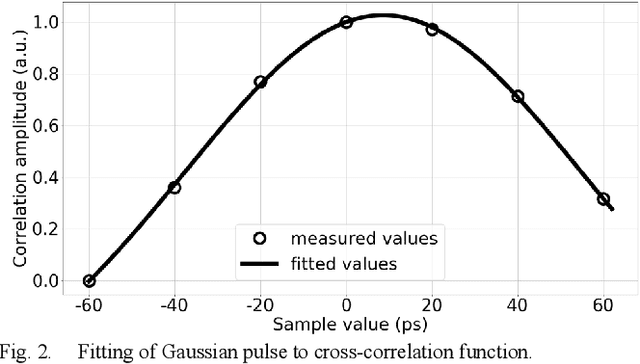
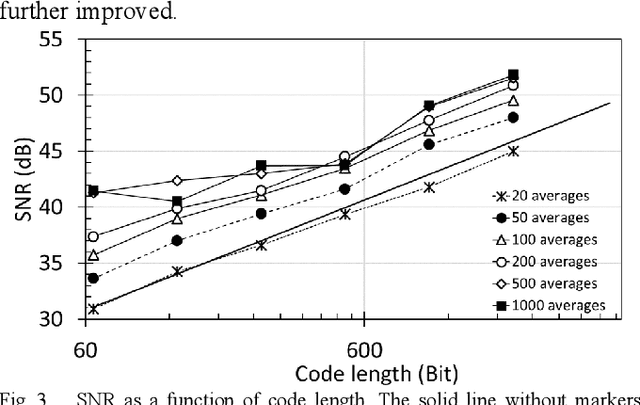
Abstract:A correlation optical time-domain reflectometry (COTDR) method is presented, which measures the propagation delay with an accuracy of a few picoseconds. This accuracy is achieved using a test signal data rate of 10 Gbit/s and employing cross-correlation and pulse fitting techniques. In this paper we introduce and evaluate the basic signal processing steps, investigate the measurement accuracy, and discuss applications for monitoring link delay and chromatic dispersion of long fiber spans as well as temperature sensing applications.
 Add to Chrome
Add to Chrome Add to Firefox
Add to Firefox Add to Edge
Add to Edge